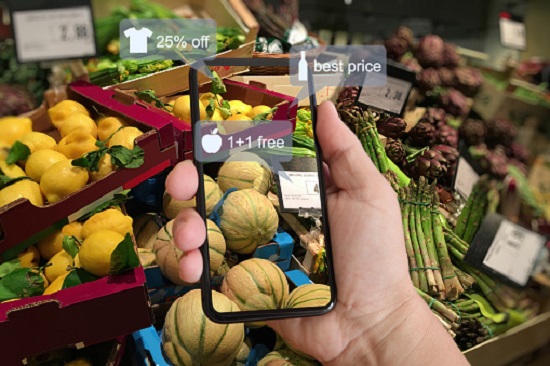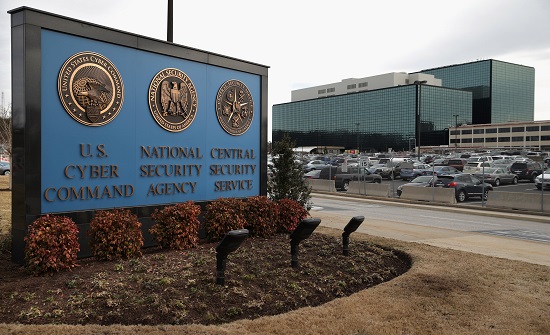AI Seen as Unstoppable Force in Food Retail
By AI Trends Staff AI is proving to be an unstoppable force in food retail, shaping the future of supermarkets and grocery stores. Many innovations tried during the pandemic were concluded to have value and so are continuing, as consumers broadened in-store shopping with online e-commerce to combine the two in new ways. “The pandemic […]


By AI Trends Staff
AI is proving to be an unstoppable force in food retail, shaping the future of supermarkets and grocery stores.
Many innovations tried during the pandemic were concluded to have value and so are continuing, as consumers broadened in-store shopping with online e-commerce to combine the two in new ways.
“The pandemic that we’ve all experienced became a strategic imperative for every organization to leverage data, analytics, and artificial intelligence to make things better,” stated Milen Mahadevan, president of the Kroger-owned data company 84.51°, at the recent virtual FMI Midwinter Executive Conference, as reported in SmartBrief “Ultimately, almost everything can be improved by leveraging data,” he stated.
Several tech trends involving AI in the grocery business were evident at the event:
Fresh food has become an important differentiator, best tailored to the complexities and dynamic nature of the fresh department.

“We think that it’s much more than just throwing artificial intelligence on an existing system that’s built for the center store,” stated Matt Schwartz, CEO of Agresh Technologies, serving food retailers with software systems, including dynamic forecasts that can handle the uncertainty of fresh food.
“The AI can guide what data the store workflows need to drive algorithms to make good decisions,” he stated. “The benefits are immense.” They included employee satisfaction from working with an effective tool, increased profitability from decreased shrink, or loss of inventory. And more in-stock food options for customers.
With fresh food, a strong forecast is needed that should be dynamic and focused to strike the right balance between shrinkage and maximizing sales.
“What we’ve learned is that doing fresh right is often a coordinated effort across the many pillars of a grocery organization,” stated Joe Smirlies, Senior VP at Invafresh (formerly Invatron), offering technology for food retailers. “Merchants need to be creative and figure out how to attract customers with fresh. We also know that data needs to flow throughout the organization seamlessly and [record] not only what worked, but also what didn’t work, and then learn from that and leverage it for continuous improvement.”
Voice Assistance On the Way to the Grocery Store
Voice assistance is also making inroads in the grocery business. More than 60% of US adults are active voice users, and since the technology offers a hands-free experience for shoppers, brands are making voice a part of their digital strategy, according to Jon Stine, executive director of Open Voice Network, a non-profit industry association developing standards and ethical use guidelines.

“This is a trend that is on its way,” stated Stine. Although, the US has been slower to adopt voice in grocery retail than in other parts of the world. In the UK, 50% of parents use voice to make purchases, and 53% of young parents use it to buy food.
This notion was seconded by Doug Rogers, chief security officer at Wegmans Food Markets, the American supermarket chain. “Voice control is not a fad. In a very short period of time, we’re going to find that it’s going to be the number one way our customers want to interact with our organization,” Rogers stated. “I know everybody is busy, everybody has hundreds of different things to do and different priorities, but all it takes is one hour a week to give it a try.”
Online grocery shopping increased dramatically during the pandemic. About 60% of US consumers now buy groceries online and they plan to continue, according to a recent study by Coresight Research reported in Supermarket News. Comparable figures were 52% in 2020 and 37% in 2019, the study found.
For online shopping, Walmart recently began offering its customers the option of using AI to more actually fulfill their online order when the requested item is out of stock.
“The decision on how to substitute is complex and highly personal to each customer. If the wrong choice is made, it can negatively impact customer satisfaction and increase costs, stated Srini Venkatesan, Executive Vice President, Walmart Global Tech, in a recent Walmart blog post. Walmart has been using personal shoppers to determine the best way to manage a substitution.
The tech solution uses deep learning AI to consider hundreds of variables—size, type, brand, price, aggregate shopper data, individual customer preference, current inventory and more—in real time to determine the best next available item. It then preemptively asks the customer to approve the substituted item or not, a signal fed back into the learning algorithms to improve the accuracy of future recommendations.
Since the AI app has been deployed, customer acceptance of substitutions has increased to over 95%, Venkatesan reported.
The Supermarket of the Future Will Be Personalized
The supermarket of the future will use AI to feature more personalization, according to an account from ITRex Group, a software development and consulting company based in Minsk, Belarus.
AI and advanced analytics can offer information on every individual buyer, such as meal preferences, food allergies, and motives behind their purchases. By employing AI in grocery personalization, retailers gain extensive knowledge of who is walking down their aisles, the report stated. This approach enables retailers to craft customized promotions to attract buyers and increase sales.
“AI technology can go incredibly deep and continues to learn over time, so it gets better at knowing which items to promote at what price. This will likely lead to different prices for different people, thanks to offers they are sent,” stated Gary Hawkins, CEO of the Center for Advanced Retail and Technology of Los Angeles.
In-store navigation is coming. The Mall of America in Bloomington, Minn., has 520 stores and 60 restaurants. The mall now deploys location-based AI chatbots, which operate through a mobile app to assist customers to find products and services.
Dynamic pricing is coming, using machine learning and AI to determine the best pricing strategy. Algorithms can analyze data from historical sales, competitor prices, inventory levels and special occasions. One tactic is to cross-sell a discounted item, such as buns, with a complimentary item (not dogs) at full price. This helps cut waste by discounting prices of goods nearing their expiration date.
Read the source articles and information in SmartBrief, in Supermarket News, in the Walmart blog post and from ITRex Group.





































